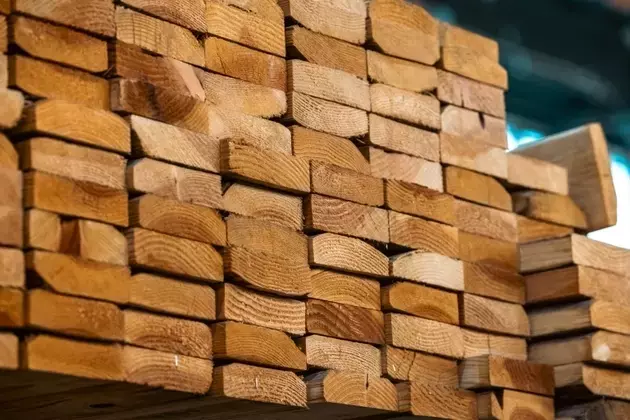
West Fraser (WFG) is currently undervalued, trading at a significant discount to its intrinsic worth. The company's robust financial health and the substantial ownership stake held by its insiders act as strong buffers against market volatility. Its diversified asset base, spread across various geographical and product segments, further enhances its resilience. Looking ahead, a promising upside of two to three times its current value is anticipated over the next three to five years, fueled by an expected rebound in demand, a decrease in available supply, and a subsequent rise in prices as the market finds a new balance.
West Fraser, a key player in the integrated wood products sector, manufactures a diverse range of products including lumber, engineered wood, oriented strand board (OSB), and other essential building materials. The company’s broad operational footprint spans over 50 facilities across North America and Europe, catering to vital construction, industrial, and home improvement markets. Its strategic positioning and diverse offerings underscore its importance in the global wood products industry.
West Fraser's Market Position and Asset Strength
West Fraser stands as a prominent global leader in the integrated wood products sector, boasting a comprehensive portfolio that includes lumber, engineered wood, oriented strand board (OSB), and a variety of other critical building materials. Headquartered in Vancouver, Canada, the company's extensive operational network encompasses over 50 state-of-the-art facilities strategically located across North America and Europe. This widespread presence enables West Fraser to effectively serve a broad spectrum of markets, including residential and commercial construction, industrial applications, and the burgeoning home improvement sector. The company's ability to produce a diverse array of essential materials positions it at the forefront of its industry, catering to a continuous demand for sustainable and high-quality wood products.
The current market valuation of West Fraser significantly understates its true worth, as evidenced by its trading at a 50-65% discount relative to its replacement value. Furthermore, the company's earnings, when normalized, are reflected in a low single-digit multiple, indicating a considerable undervaluation. A cornerstone of West Fraser's stability is its exceptionally strong balance sheet, which provides a solid financial foundation and mitigates risks. Complementing this is the substantial insider ownership, which aligns the interests of management with those of shareholders, fostering confidence and commitment. These elements, combined with a diversified asset base that spans multiple segments and regions, offer robust downside protection, making West Fraser an attractive investment with inherent resilience against market fluctuations and economic downturns. The strategic diversification ensures that the company is not overly reliant on any single product line or geographic market, enhancing its overall stability and long-term viability.
Future Outlook and Valuation Upside
The future prospects for West Fraser are exceptionally positive, with projections pointing towards a substantial valuation increase of 2-3 times over the next three to five years. This optimistic outlook is predicated on several key market dynamics that are expected to converge favorably for the company. Firstly, a significant recovery in global demand for wood products is anticipated, driven by renewed construction activities and an overall improvement in economic conditions. As economies stabilize and grow, the demand for housing, infrastructure, and commercial buildings will invariably boost the need for materials like those West Fraser produces. Secondly, a reduction in the overall supply of wood products is expected, partly due to ongoing rationalization within the industry and environmental policies that may limit logging in certain regions. This tightening of supply, coupled with rising demand, is a classic economic scenario that typically leads to increased prices.
As these supply and demand forces recalibrate, a new market equilibrium is expected to emerge, characterized by higher and more sustainable pricing for wood products. This environment will enable West Fraser to capitalize on its efficient production capabilities and diversified product offerings, leading to enhanced profitability and cash flow generation. The company's existing robust balance sheet will also allow it to invest in strategic growth opportunities or return capital to shareholders, further boosting its appeal. Consequently, the combination of recovering market conditions, reduced supply, and increased prices is set to drive a significant revaluation of West Fraser, offering considerable upside potential for investors who recognize its current undervaluation and long-term growth trajectory. The anticipated market adjustments are not just cyclical but also reflect structural changes that will likely benefit well-positioned companies like West Fraser for the foreseeable future, making it a compelling investment in the wood products industry.
